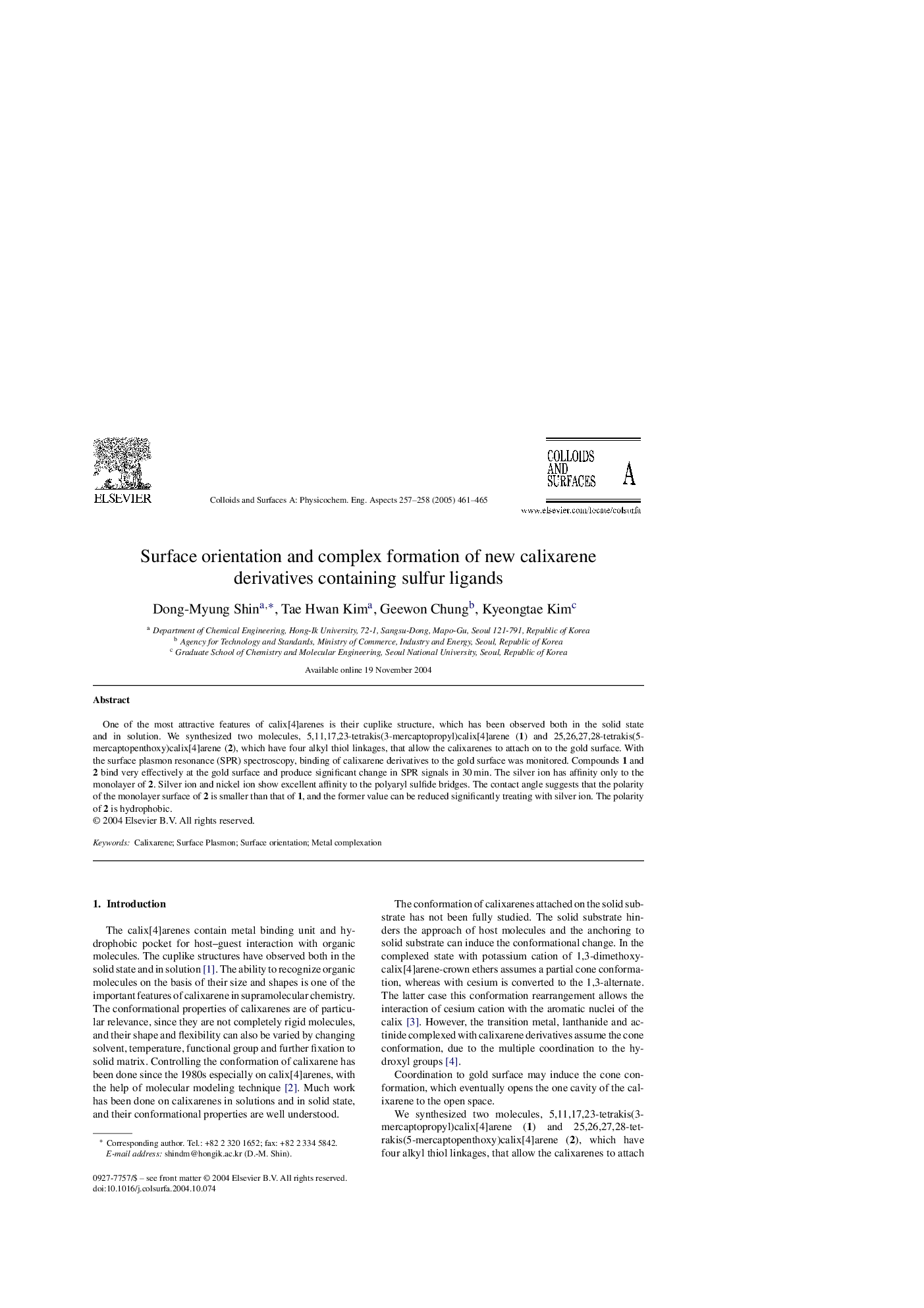| Article ID | Journal | Published Year | Pages | File Type |
|---|---|---|---|---|
| 9676013 | Colloids and Surfaces A: Physicochemical and Engineering Aspects | 2005 | 5 Pages |
Abstract
One of the most attractive features of calix[4]arenes is their cuplike structure, which has been observed both in the solid state and in solution. We synthesized two molecules, 5,11,17,23-tetrakis(3-mercaptopropyl)calix[4]arene (1) and 25,26,27,28-tetrakis(5-mercaptopenthoxy)calix[4]arene (2), which have four alkyl thiol linkages, that allow the calixarenes to attach on to the gold surface. With the surface plasmon resonance (SPR) spectroscopy, binding of calixarene derivatives to the gold surface was monitored. Compounds 1 and 2 bind very effectively at the gold surface and produce significant change in SPR signals in 30Â min. The silver ion has affinity only to the monolayer of 2. Silver ion and nickel ion show excellent affinity to the polyaryl sulfide bridges. The contact angle suggests that the polarity of the monolayer surface of 2 is smaller than that of 1, and the former value can be reduced significantly treating with silver ion. The polarity of 2 is hydrophobic.
Related Topics
Physical Sciences and Engineering
Chemical Engineering
Colloid and Surface Chemistry
Authors
Dong-Myung Shin, Tae Hwan Kim, Geewon Chung, Kyeongtae Kim,
